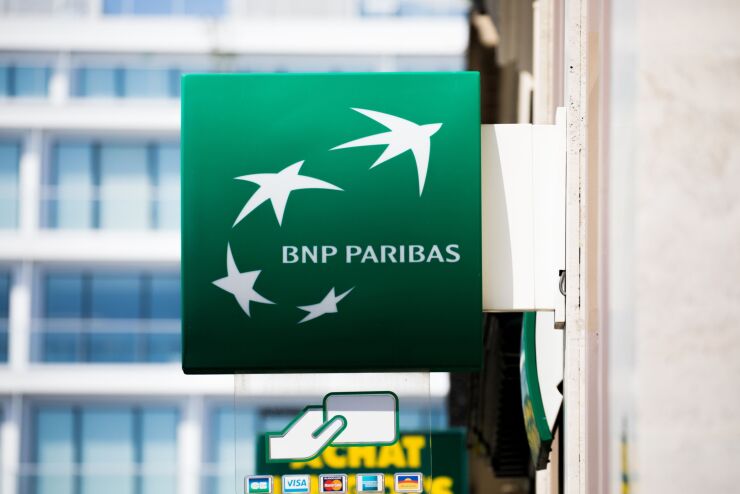Biometric cards have garnered more attention in recent times through various trials, but the coronavirus pandemic looks set to accelerate their adoption with a series of major card issuers beginning to roll out the technology.
In France, BNP Paribas is preparing to make 10,000 to 15,000 biometric cards available for the first time this fall, in partnership with Visa and Swedish fintech Fingerprint Cards, which integrates fingerprint sensor technology into a payment smart card. Crédit Agricole is following suit, with plans in place to launch biometric cards at three regional banks by the end of 2020.
“We see momentum in the market,” said Michel Roig, senior vice president of business line payments and access at Fingerprint Cards. “To date, 21 dual-interface biometric payment card market trials have been conducted in the world, and the feedback has in general been very good. People find biometric cards to be convenient, secure and reliable. Most say they would upgrade their current favorite card to a biometric one, if offered.”
Further developments are underway across the continent. Fingerprint Cards has also joined forces with German contactless card giant Infineon Technologies while in Italy, fintechs IDEX Biometrics and Zwipe have partnered with Publicenter — the country’s largest domestic smart card manufacturer — to create a product integrating its fingerprint sensor and biometric authentication technology, with the aim of issuing biometric payment cards in 2021.

Facial recognition biometrics are also spreading as forms of payment authentication. Romanian fintech PayByFace recently announced a partnership with card issuer Up Romania, which will enable cardholders to make payments in more than 500 affiliated stores and restaurants across the country over the next year by scanning their face with the PayByFace app. At the moment uptake is very limited because mask wearing is mandatory in many parts of the country due to COVID-19 but more partnerships are reportedly in the works in the U.K., France, Italy, Switzerland, the Netherlands and Bulgaria.
Coronavirus pandemic is seen as a major driver for this sudden surge in adoption and collaboration. Fear of the virus has transformed the perception of biometrics from an interesting gimmick to a more hygienic method of paying.
“With many businesses discouraging the use of cash because of hygiene concerns, retailers and consumers are driving demand for a secure and touch-free payment experience,” said Vince Graziani, CEO of IDEX Biometrics. “No one wants to touch a point of sales device or PIN pad now, and we’ve seen increased interest over the past few months as a result.”
In particular, biometric authentication appears set to benefit from the coronavirus-driven push towards contactless cards and wallet apps as the predominant payment method in many stores. A recent global Visa survey reported that nearly half of consumers surveyed would not shop at a store which only offers payment methods requiring contact with a cashier or a shared device.
Roig is predicting that more banks and card issuers will start turning to biometric solutions as a way of tackling the problem of contactless card fraud, and in the process, removing the need for caps on contactless payments.
“There has been a clear upswing in contactless payments in the wake of the pandemic because consumers want to avoid touching surfaces in public environments as far as possible,” he said. “This could lead to an acceleration in the rollout of biometric payment cards, since the increased security offered by fingerprint authentication makes it possible to eliminate payment caps.”
At the same time, biometric cards have a long way to go before becoming truly mainstream. This is largely because the cards are not especially cost-effective. Initially many banks are making the products available only to specific customer segments, as is the case with BNP Paribas, where the new cards will be offered to Premier or Gold customers.
“Last year we conducted a survey in cooperation with PayTech asking banks about their likely go-to-market strategy for biometric cards,” said Roig. “64% of respondents said that they would offer biometric cards to specific segments in the next two-year period, and 56% said that they would offer it for a fee. The cost of the cards will need to decrease from today’s level before we will see mass deployment of the technology.”
Opportunities will undoubtedly abound in the next couple of years, although some feel that the growing competition between fintechs racing to bring the next generation of payment cards to market, is not always a positive thing.
“The payment card ecosystem must pull together,” said Graziani. “Some of the players in our market see business as ‘us against them’, whereas I firmly believe there has to be more than one successful fingerprint biometric provider to really drive the market. All players need to work together to get the market moving and meet consumer demand.”





